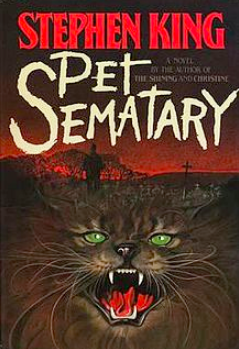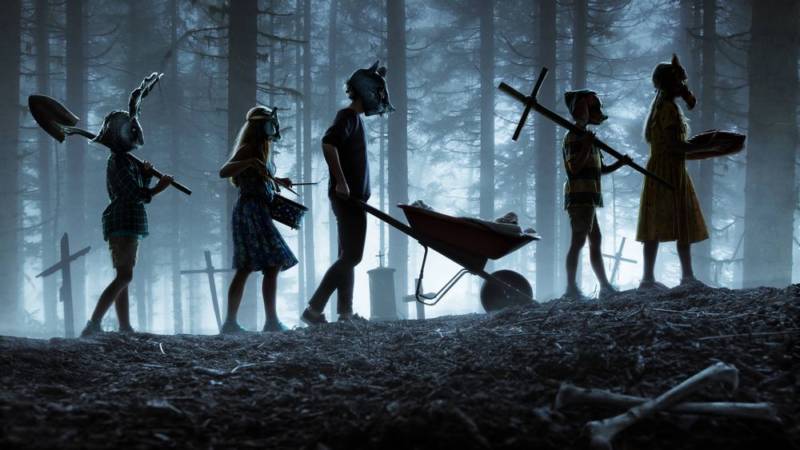Warning: The following contains minor spoilers for Stephen King's 'Pet Sematary' and its 1989 film adaptation.
It's a tale that was never supposed to see the light of day; one so unrelentingly horrible, even author Stephen King considered it too dark to put out into the world. The only reason Pet Sematary ever got released was to settle a contract dispute between King and publishing company, Doubleday. "Otherwise," King recently told Entertainment Weekly, "it would still be in a drawer somewhere ... I was thinking, 'Well, Doubleday can go fuck themselves.'"
 The story concerns Louis Creed, a doctor who moves his wife, young daughter and two-year-old son out of Chicago to a small town in Maine. When their pet cat, Church, is killed on the busy road by their house, rather than burying him in the nearby "Pet Sematary" built (and misspelled) by local children, a misguided neighbor takes the doctor to an ancient site beyond the cemetery and instructs him to bury the animal there instead. The next day, Church returns home, alive but changed for the worse. Some time later, when the Creeds' toddler, Gage, runs afoul of the same busy road, a grief-stricken Louis Creed moves his son's body to that same mysterious burial ground—with disastrous results.
The story concerns Louis Creed, a doctor who moves his wife, young daughter and two-year-old son out of Chicago to a small town in Maine. When their pet cat, Church, is killed on the busy road by their house, rather than burying him in the nearby "Pet Sematary" built (and misspelled) by local children, a misguided neighbor takes the doctor to an ancient site beyond the cemetery and instructs him to bury the animal there instead. The next day, Church returns home, alive but changed for the worse. Some time later, when the Creeds' toddler, Gage, runs afoul of the same busy road, a grief-stricken Louis Creed moves his son's body to that same mysterious burial ground—with disastrous results.
Remarkably, the story was inspired very closely by events in King's own life. In 1979, he had moved his young family to a house in rural Maine that faced a busy road frequented by speeding trucks and backed by woods containing a pet cemetery built by local children. (The "Sematary" spelling was lifted directly from that location.) While living there, King's daughter lost her beloved cat Smucky to the traffic outside, and, utterly bereft, buried him in the pet cemetery. Horrifyingly, King's son Owen had a near-miss with a truck there, saved only when his father caught his arm and pulled him back from the road. Even Pet Sematary's well-meaning neighbor was based on the person that found Smucky's lifeless body.
Entire sections of dialogue in the novel—including things King's daughter said while mourning the loss of her cat—are lifted from family conversations. "And I read it over," King told EW, "and I said to myself, 'This is awful. This is really fucking terrible.' Not that it was badly written ... But all that stuff about the death of kids. It was close to me because my kids lived on that road."


